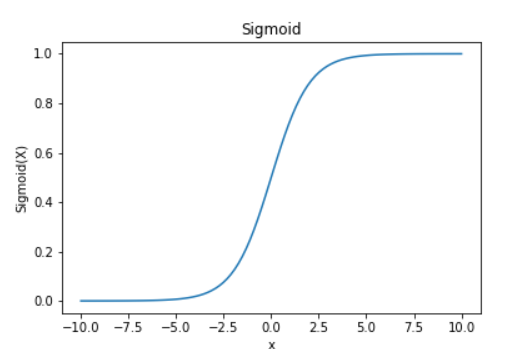一、简介
逻辑回归虽然名称中包含"回归"二字,但实际上是一种广泛应用于二分类问题的经典机器学习算法。这种命名源于其使用逻辑函数(也称为Sigmoid函数)来建模二元分类问题,本质上是对线性回归的扩展。
逻辑回归的核心思想是将线性回归的输出通过Sigmoid函数映射到0-1之间的概率值。具体来说:
- 首先计算特征的线性组合:z = w0 + w1x1 + ... + wnxn
- 然后通过Sigmoid函数转换:σ(z) = 1/(1+e^-z)
- 最终输出代表样本属于正类的概率

在二分类问题中,模型会输出一个0到1之间的概率值,表示样本属于正例(positive class)的可能性。我们需要设定一个分类阈值(decision threshold)来将概率值转换为最终的类别预测。
最常用的默认阈值是0.5,其决策规则如下:
- 当预测概率 ≥ 0.5 时,判定为正例(positive)
- 当预测概率 < 0.5 时,判定为反例(negative)
例如:
- 如果一个样本的预测概率为0.7,则判定为正例
- 如果预测概率为0.3,则判定为反例
在实际应用中,阈值的选择可以根据具体需求进行调整:
- 医疗诊断中可能将阈值设为0.3以提高敏感度(减少假阴性)
- 垃圾邮件过滤可能将阈值设为0.8以提高精确度(减少假阳性)
调整阈值会影响模型的性能指标:
- 提高阈值会增加精确度,但降低召回率
- 降低阈值会增加召回率,但降低精确度
评估不同阈值下模型表现的常用方法是绘制ROC曲线或精确率-召回率曲线。
在实际应用中,逻辑回归具有以下典型特点:
- 计算效率高,训练速度快
- 输出具有概率解释性
- 可以添加L1/L2正则化防止过拟合
- 通过特征工程可以处理非线性决策边界
典型的应用场景包括:
- 金融风控:预测贷款违约概率
- 医疗诊断:判断疾病发生可能性
- 市场营销:预测客户购买倾向
- 垃圾邮件过滤:识别垃圾邮件
值得注意的是,虽然标准的逻辑回归是二分类算法,但通过以下方式可以扩展到多分类问题:
- One-vs-Rest(OvR)策略
- Multinomial逻辑回归(Softmax回归)
- One-vs-One(OvO)策略
逻辑回归因其简单、高效和可解释性强的特点,在实践中仍然是很多分类任务的首选算法,特别是在需要概率输出或对模型解释性要求较高的场景中。
二、逻辑回归的使用
一、逻辑回归函数分类
class sklearn.linear_model.LogisticRegression( penalty='l2',
dual=False,
tol=0.0001,
C=1.0,
fit_intercept=True,
intercept_scaling=1,
class_weight=None,
andom_state=None,
solver='lbfgs',
max_iter=100,
multi_class='auto',
verbose=0,
warm_start=False,
n_jobs=None,
l1_ratio=None )
二、核心参数详解
1. 正则化参数
参数 |
类型 |
说明 |
|---|---|---|
|
str |
正则化类型:'l1', 'l2', 'elasticnet' 或 'none' |
|
float |
正则化强度,必须为正数,越小表示正则化越强 |
|
float |
ElasticNet混合比例(0-1),仅当 |
2. 算法控制参数
参数 |
类型 |
说明 |
|---|---|---|
|
str |
优化算法:'newton-cg', 'lbfgs', 'liblinear', 'sag', 'saga' |
|
int |
最大迭代次数 |
|
float |
停止标准的容忍度 |
|
bool |
对偶或原始形式,仅适用于liblinear和l2惩罚 |
3. 多分类参数
参数 |
类型 |
说明 |
|---|---|---|
|
str |
'auto', 'ovr'(一对多), 'multinomial'(多项式) |
|
int |
用于计算的CPU核心数,仅适用于多分类问题 |
4. 其他参数
参数 |
类型 |
说明 |
|---|---|---|
|
dict/str |
类别权重:None, 'balanced' 或字典形式 |
|
int |
随机种子,用于solver='sag', 'saga'或'liblinear' |
|
bool |
是否重用前一次调用的解决方案 |
三、属性说明
训练后模型将获得以下属性:
属性 |
说明 |
|---|---|
|
分类器已知的类别标签 |
|
特征系数(权重) |
|
决策函数中的截距(偏置) |
|
实际迭代次数 |
四、主要方法
1. 训练模型
fit(X, y, sample_weight=None)
X:训练数据,形状(n_samples, n_features)y:目标值,形状(n_samples,)sample_weight:样本权重,形状(n_samples,)
2. 预测
predict(X)
返回预测类别
3. 概率预测
predict_proba(X)
返回每个类别的概率估计,形状(n_samples, n_classes)
4. 决策函数
decision_function(X)
返回样本到决策超平面的距离
5. 评分
score(X, y, sample_weight=None)
返回预测准确率
五、solver选择指南
solver |
支持的惩罚 |
多分类 |
大数据集 |
备注 |
|---|---|---|---|---|
'liblinear' |
L1, L2 |
仅OvR |
不适合 |
小数据集首选 |
'newton-cg' |
L2 |
支持 |
不适合 |
需要计算Hessian矩阵 |
'lbfgs' |
L2 |
支持 |
适合 |
默认选择 |
'sag' |
L2 |
支持 |
适合 |
随机平均梯度下降 |
'saga' |
L1, L2, Elasticnet |
支持 |
适合 |
sag的扩展,支持所有惩罚 |
import numpy as np
from sklearn.linear_model import LogisticRegression
data = np.loadtxt('datingTestSet2.txt')
# data_1 = data[data[:,-1]==1]
# data_2 = data[data[:,-1]==2]
# data_3 = data[data[:,-1]==3]
X = data[:,:-1]
Y = data[:,-1]
from sklearn.model_selection import train_test_split
X_train, X_test, y_train, y_test = train_test_split(X, Y, test_size=0.3, random_state=100)#随机拆分
lr = LogisticRegression(C=0.01)#训练
lr.fit(X_train, y_train)
y_pred = lr.predict(X_test)
score = lr.score(X_test, y_test)
print(score)
三、示例
import numpy as np
import pandas as pd
from sklearn.model_selection import train_test_split
from sklearn.linear_model import LogisticRegression
'''绘制混淆矩阵'''
def polt_matrix(x,y):#x:真实标签,y:测试标签
from sklearn.metrics import confusion_matrix
import matplotlib.pyplot as plt
cm = confusion_matrix(x,y)
plt.matshow(cm,cmap=plt.cm.Blues)
plt.colorbar()
for i in range(len(cm)):
for j in range(len(cm)):
plt.annotate(cm[i][j], xy=(j,i), horizontalalignment='center', verticalalignment='center')
plt.ylabel('True label')
plt.xlabel('Predicted label')
return plt
'''画图'''
def plot_z(data):
import matplotlib.pyplot as plt
from pylab import mpl
mpl.rcParams['font.sans-serif'] = ['Microsoft YaHei']
mpl.rcParams['axes.unicode_minus'] = False
lables_count = pd.value_counts(data['Class'])
print(lables_count)
# plt.title = '正负例样本数'
# plt.xlabel = '类别'
# plt.ylabel = '频数'
ax=lables_count.plot(kind='bar')
ax.set_title('正负例样本数', fontsize=14)
ax.set_xlabel('类别', fontsize=12)
ax.set_ylabel('频数', fontsize=12)
plt.show()
'''数据预处理'''
data = pd.read_csv('creditcard.csv')
'''
z标准化
'''
from sklearn.preprocessing import StandardScaler
scaler = StandardScaler()
data['Amount'] = scaler.fit_transform(data[['Amount']])#二维数据,z标准化
data = data.drop('Time', axis=1)
'''切分数据集'''
X_train = data.drop('Class', axis=1)
Y_train = data.iloc[:,-1]
# '''随机切分,训练模型'''
# x_train, x_test, y_train, y_test = \
# train_test_split(X_train, Y_train, test_size=0.3, random_state=100)
# '''下采样,解决样本不均衡'''
# x_train['Class'] = y_train
# data = x_train
#
# positive_data = data[data['Class'] == 0]
# negative_data = data[data['Class'] == 1]
# #随机
# positive_data = positive_data.sample(len(negative_data))
#
# data_c =pd.concat([positive_data, negative_data])
#
# x_train =data_c.drop('Class', axis=1)
# y_train =data_c['Class']
# plot_z(data_c)
'''过采样,解决样本不均衡'''
x_train, x_test, y_train, y_test = \
train_test_split(X_train, Y_train, test_size=0.2, random_state=0)
#smote算法
from imblearn.over_sampling import SMOTE
seed = SMOTE(random_state=0)
x_train, y_train = seed.fit_resample(x_train, y_train)
# x_train['Class'] = y_train
# data_c = x_train
# plot_z(data_c)
# x_train,x_test,y_train,y_test= \
# train_test_split(x_train, y_train, test_size=0.2, random_state=0)
'''惩罚因子,交叉验证'''
#
from sklearn.model_selection import cross_val_score
scores = []
c_param_range = [0.01,0.1,1,10,100]#遍历c_param参数列表
for c_param in c_param_range:
lr = LogisticRegression(C=c_param,penalty='l2',solver='lbfgs',max_iter=1000)
score = cross_val_score(lr, x_train, y_train, cv=8,scoring='recall')
scores_m = sum(score)/len(score)
scores.append(scores_m)
print(scores_m)
best_param = c_param_range[np.argmax(scores)]
print('最佳惩罚因子为:',best_param)
lr = LogisticRegression(C=best_param,penalty='l2',max_iter=1000)
lr.fit(x_train, y_train)
#混淆矩阵
y_spred = lr.predict(x_train)
y_pred = lr.predict(x_test)
result = lr.score(x_test, y_test)
polt_matrix(y_train, y_spred).show()
polt_matrix(y_test, y_pred).show()
print(result)
from sklearn import metrics
print('自测:',metrics.classification_report(y_train, y_spred))
print('测试:',metrics.classification_report(y_test, y_pred))#获得测试集测试报告
'''调整Sigmoid函数阈值,以结果为导向'''
thresholds = [0.1,0.2,0.3,0.4,0.5,0.6,0.7,0.8,0.9]
recalls = []
for t in thresholds:
y_spred = lr.predict_proba(x_test)
y_spred = pd.DataFrame(y_spred).drop([0], axis=1)
y_spred[y_spred[1]>t] = 1 #大于阈值的为1
y_spred[y_spred[1]<=t] = 0 #小于阈值为0
recall = metrics.recall_score(y_test, y_spred)#单独获取召回率
recalls.append(recall)
print(f'阈值:{t},召回率:{recall}')
best_thresholds = thresholds[np.argmax(recalls)]
print(f'最佳阈值:{best_thresholds},召回率:{recalls[np.argmax(recalls)]}')